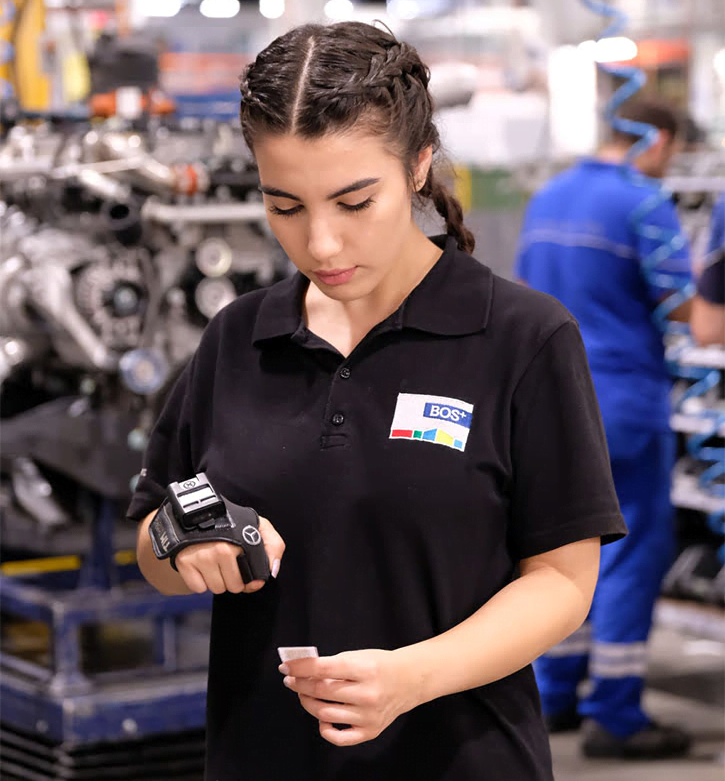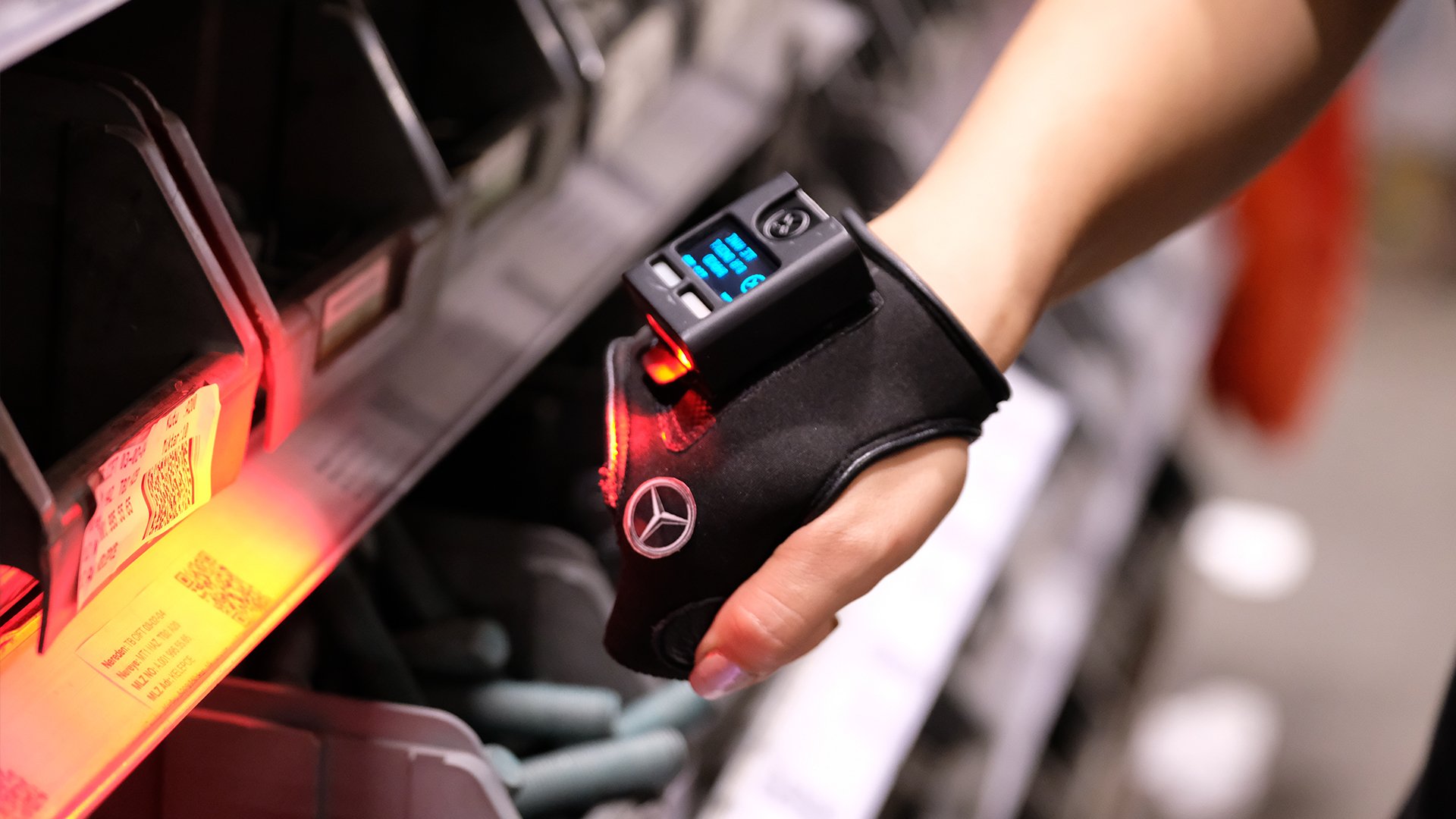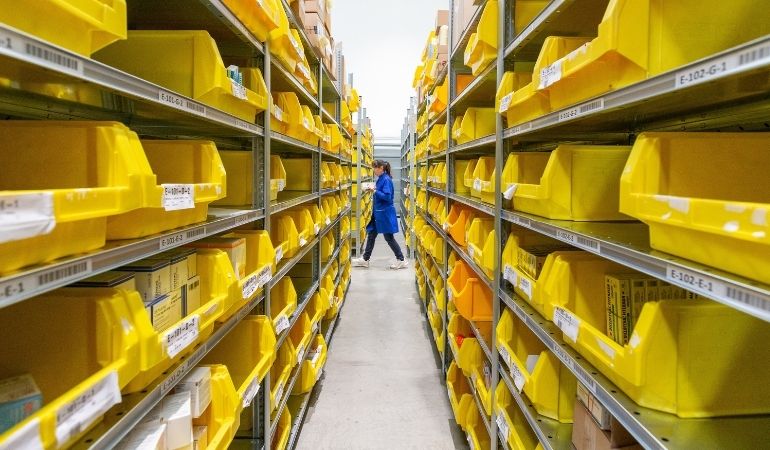Barcode Scanner Software & Modern Scanners | Build A Connected System
Barcode scanner software is basically an Industry 4.0 and digital transformation wonder where groundbreaking scanning technology and data analysis...
3 min read
Işık Handan : Oct 11, 2021 10:57:17 AM
Barcode scanning systems are not new to the world. But new technologies add up to their value to supply chain management. Using the right barcode scanning system can help you streamline your supply chain and use data to improve your operational efficiency.
Because connected supply chains where physical and digital elements work together to prove to be much more efficient in adapting to changing conditions and needs. Before diving deep into the whys and hows, let’s find out what a barcode scanning system is.
A barcode scanning system is a combination of hardware and software, where data is collected and processed by the hardware and transmitted to the software.
The hardware is an optical scanner that reads the barcode and decodes the information on it. In other words, it translates optical information it collects into electrical signals.

The software helps businesses easily see, interpret, and analyze the data to make data-driven decisions.
Scanning systems are a must-have for any warehouse environment thanks to their crucial role in optimizing inventory management, picking, sorting, packing and shipping processes. Let’s learn how.
Warehouse management without a barcode scanning system is a story of the past. Both businesses and the end customer expect the best service at the best price, and you need efficiency in your logistics to offer that.
Manual inventory management falls short of meeting those customer needs. It’s impossible to survive in a fast-paced environment without a system where data flows with accuracy and speed.
Whereas a connected system allows you to allocate your resources efficiently, get the most out of your tools and boost worker productivity all at once. And equally important is the ability it gives you to adapt to external events that’s outside your control.
So, how do they have such a tremendous impact on efficiency and productivity?
A connected warehouse system saves you from enormous costs that are born out of inefficiencies. How?
Overstocks and out-of-stocks cost businesses a whopping $1,106 billion each year.
Overstocks: $471.9
Out-of-stocks: $634.1
Businesses must build connected environments to avoid those gigantic costs. And barcode scanning in supply chain operations can help you a great deal in cost avoidance.
New generation barcode scanners allow you to input data on a screen from a long distance, meaning that you can enter the changes in inventory into the software right when they happen.
Once the data is transmitted with accuracy, you can detect from the software’s dashboard which products are low in stock, which ones are slow-moving.
And by looking at historical data, you can analyze long-term inventory movements and prepare yourself appropriately for the next period.
Smart barcode scanners prevent mistakes before they happen. Humans are prone to error in fast-paced environments. And those errors cost a lot. But modern barcode scanners detect errors that might occur at any point in picking, sorting, and packing processes.
And more importantly, they have an instant feedback mechanism that lets the worker know about the mistake. The most advanced scanners provide multilayer feedback: optic, acoustic, and haptic. So, how do these mechanisms work?
Say, for instance, a picker picks the wrong item on the shelf, or picks the wrong number of items. A wearable barcode scanner detects those mistakes through its smart sensors and makes sure they know via sound, vibrations, and light!
This proactive approach to warehouse management is different from what traditional scanners offer. And another contribution wearables bring into play is the mobility they give to users.
Since wearable barcode scanners are hands-free, they allow warehouse workers to carry boxes comfortably and with speed. This can lead to 50% improvement in speed, and help you have healthy and productive employees.
First, decide what you need and expect from an industrial scanner. For instance, if you don’t want to spend time and money on maintenance, look for a durable barcode scanner. Some industrial scanners can operate for 6 months without maintenance or repair.
Second, look for easy setup and compatibility. You don’t want to push your employees too far away from their comfort zone. That’s why you want a plug-and-play device compatible with the systems already in use.
Third, make sure the device has a long-lasting battery. Choose a device that allows for more than 2000 scans on a single charge. Having to charge a portable device one too many times does not make sense.
Barcode scanning in the supply chain is a must-have if you want to meet skyrocketing customer expectations and run successful operations.
It saves time and money—and helps you make data-driven decisions. Cost and time savings add to the budget you can spend on development, and data drives you in the right direction. Those are exceptional assets for a business to scale.
Decide what you need from a barcode scanning system and look for devices that’ll serve your needs.

Barcode scanner software is basically an Industry 4.0 and digital transformation wonder where groundbreaking scanning technology and data analysis...

Wearable barcode scanners are the way of shaping the future in warehouses. It can be explained as scanning improves overall efficiency, makes workers...
The barcode system, which automatically transfers and processes data to the digital environment, comes up with many types. Thin/thick lines, big and...